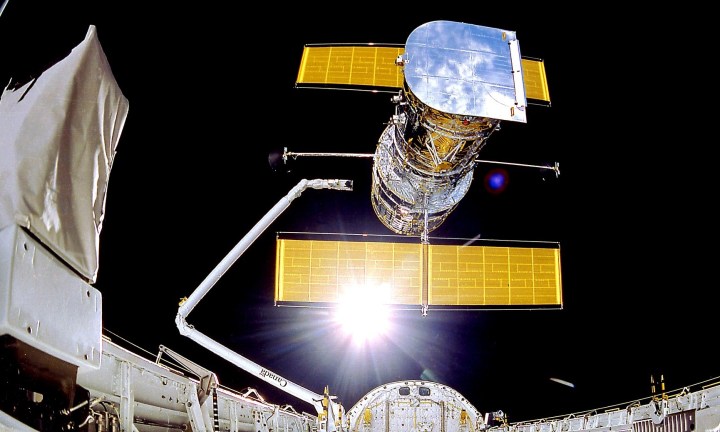
The computer problems plaguing the Hubble Space Telescope have continued this week, with NASA preparing to switch over to backup hardware in order to fix the issue.
Hubble’s problems began in June, when the payload computer which controls the scientific instruments on the orbiting telescope went offline. When this happened, all of the instruments automatically went into safe mode, which means that they should all still be healthy and functional, but they aren’t currently collecting data.
The NASA team on the ground went through several rounds of attempting fixes, trying to zero in on what exactly was causing the problem. The latest update from NASA confirms that the problem is in a unit called the Science Instrument Command and Data Handling (SI C&DH), within which there are several pieces of hardware which could be responsible for the failure.
NASA describes the next steps in an update: “The team is currently scrutinizing the Command Unit/Science Data Formatter (CU/SDF), which sends and formats commands and data. They are also looking at a power regulator within the Power Control Unit, which is designed to ensure a steady voltage supply to the payload computer’s hardware.”
If either of these systems turns out to be the problem, then the fix would be to switch from the existing units to the backups. Most of the Hubble hardware has both primary and backup versions, so that the team can switch from one to the other if something goes wrong with any piece of hardware. However, switching to backup units can be a complicated process. Because of the way the systems are connected, several pieces of hardware must also be switched off before the backup CU/SDF or power regulator can be switched over.
The team is preparing for switching to backup hardware this week, including testing out the switching process using a simulator. The good news is, this isn’t the first time such a procedure has been performed. “The team performed a similar switch in 2008, which allowed Hubble to continue normal science operations after a CU/SDF module failed,” NASA wrote. “A servicing mission in 2009 then replaced the entire SI C&DH unit, including the faulty CU/SDF module, with the SI C&DH unit currently in use.”



